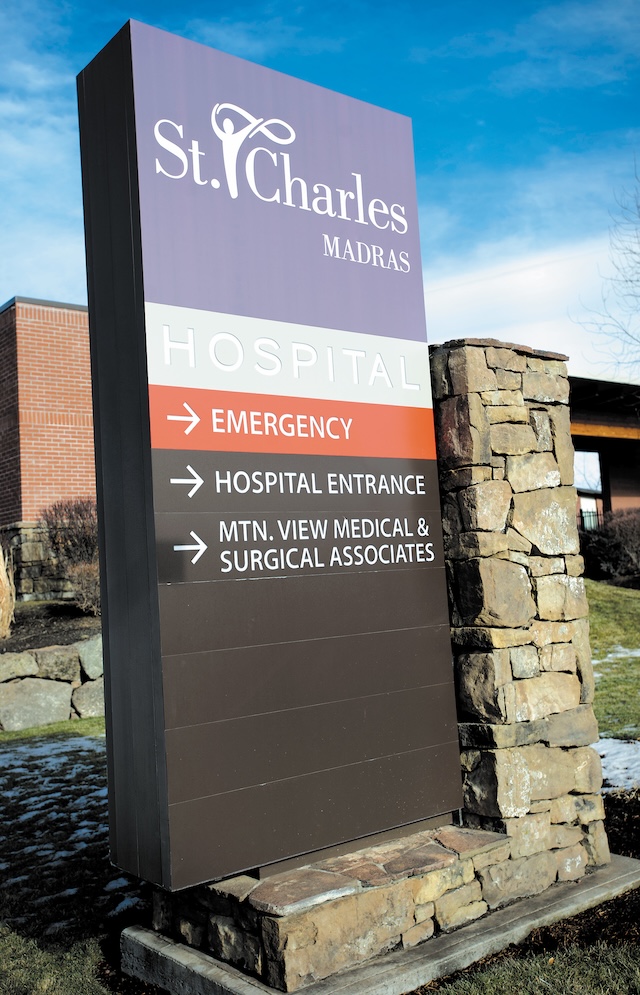Methamphetamine use on the rise in Deschutes County
Published 5:45 am Wednesday, February 19, 2025

- Joe Spratt takes in the view at Recover Together Bend in Monday. Spratt is a recovering methamphetamine addict.
For only the second time in 30 years Bend resident Joe Spratt has been free from using methamphetamines.
Today he’s 90 days sober.
Trending
It’s a big deal, said the 46-year-old Spratt. Without drug use, he celebrated his brother’s birthday in Prineville. He is working for a cabinet maker and he’s living on his own. And he will be able to get his driver’s license for the first time since he was 17.
“I feel better about myself,” Spratt said. “The 30 days in-patient treatment worked for me this time. In the program, there’s support. You go to meetings. You get a phone list, so you can call someone who can help you get through it.”
He gives credit to the in-treatment center Recover Together Bend, a 15-bed residential treatment center for substance users that got him started on the road to recovery.
The center, which opened a year ago, gives recovering addicts a 30-day in-patient treatment plan, then helps them connect to an out-patient recovery program and with a 12-step program. And for as long as the patient needs, there is access to 24/7 clinical care, said Dr. David Campbell, who works at Recover Together Bend.
The center is part of a regional response to deal with rising methamphetamine abuse in Central Oregon. While fentanyl has dominated the news in recent years as the drug behind rising overdose deaths, affordability and availability have led to increasing meth use.
Methamphetamine is a highly addictive stimulant, according to the Centers for Disease Control and Prevention. From 2015 to 2018, about 1.6 million people 18 and older reported using methamphetamine. And over the years the cost has dropped to about $5 for a three-day high, while potency has increased, while the risk of having it mixed with fentanyl also grew.
Trending
Treatment of methamphetamine use requires a tailored approach, said Campbell. The mission is to provide treatment regardless of the insurance the patient has. The unique treatment at Recover Together works on building self-esteem and team building through recreation and 12-step meetings.
“Meth’s low cost and high availability is alarming. Drug use is not a moral failing, but a disease,” Campbell said. For Central Oregon, flexibility in funding allocation is key to addressing our specific challenges with methamphetamine use, while still combatting opioid misuse.
“We need to treat and teach our way out of this problem. It’s a disorder, not a criminal problem.”
BestCare is another in and out patient treatment center, which treats substance users in-patient, said Rick Treleaven, BestCare Treatment Services Inc. CEO. Most substance users don’t only use one substance, Treleaven said. Most mix alcohol, marijuana, meth and opiates, he said.
“So much of the meth supply in Central Oregon is laced with fentanyl that many meth addicts we see are surprised when they withdraw that they end up with an opiate withdrawal. We treat all substance use disorders here.”
Methamphetamine use
In Deschutes County there were 13 overdose deaths related to methamphetamine in the first six months of 2024, according to data provided by the Deschutes County Health Services department. In 2023 there were 16 overdose deaths in the county that included methamphetamine.
Statewide the number of overdose deaths among people using methamphetamine and fentanyl rose steeply since 2019, when there were fewer than five deaths attributed to these drugs, to 2023 when there were 47 deaths, according to the county health data.
“There is the potential for cross contamination in the unregulated drug supply so it is possible that there may occasionally be fentanyl in the methamphetamine supply,” said Leslie Corless, Deschutes County Health Department harm reduction program coordinator in an email. “Given the unregulated supply, we suggest people who use methamphetamines, or any substances to test your substances for fentanyl and do not use alone.”
Drug users should also carry naloxone, the opioid overdose reversal drug.
At many drug treatment centers, the behavioral health approaches are similar regardless of the substance being used, Treleaven said.
Spratt’s story
It was nearly three months ago when Spratt called the addiction treatment facility and asked if they had space for him. He checked himself in and right away he was in 12-step meetings and detoxing in a home in Bend with others in the safe place.
“I was in another in-patient treatment program in 2000 in Medford,” said Spratt.. “It too was a good program, but they wouldn’t allow you to nap and got you up at 6 a.m. In the first month of sobriety, your energy is pretty low.”
It takes a lot of effort, he said, to remain sober. Meetings and connections with a whole new group of people. Being real with feelings and talking about how past traumas inform the present. In the Recover Together Bend program, it’s not just about talk therapy, there’s games and yoga and other activities to help with the addiction by creating a community.
“The 12 steps give us the opportunity to dig into ourselves and deal with childhood trauma,” Spratt said. “When you get to a certain age, you get tired of living a certain way. But now I’m getting up in the morning and I know I’m going to work and have no (meth) hangover.”








